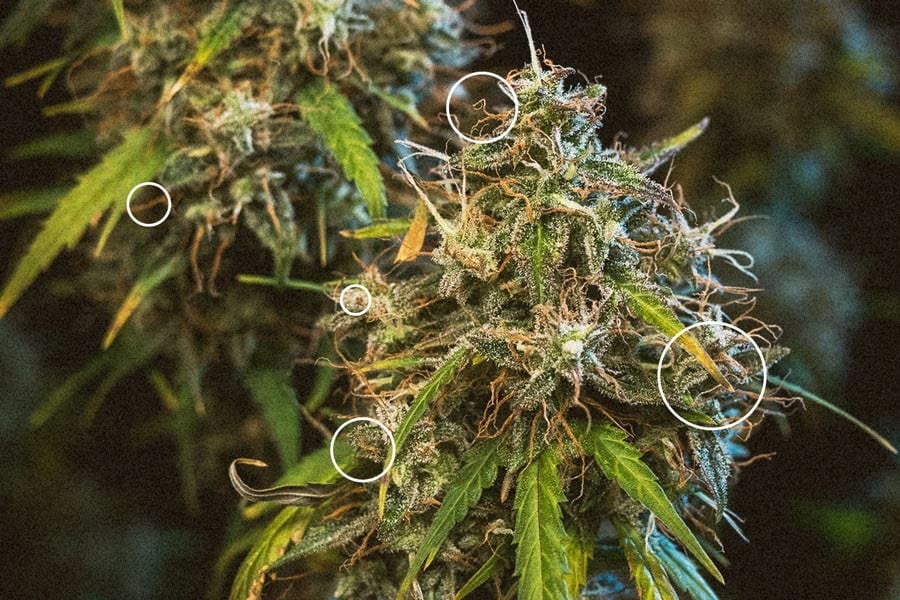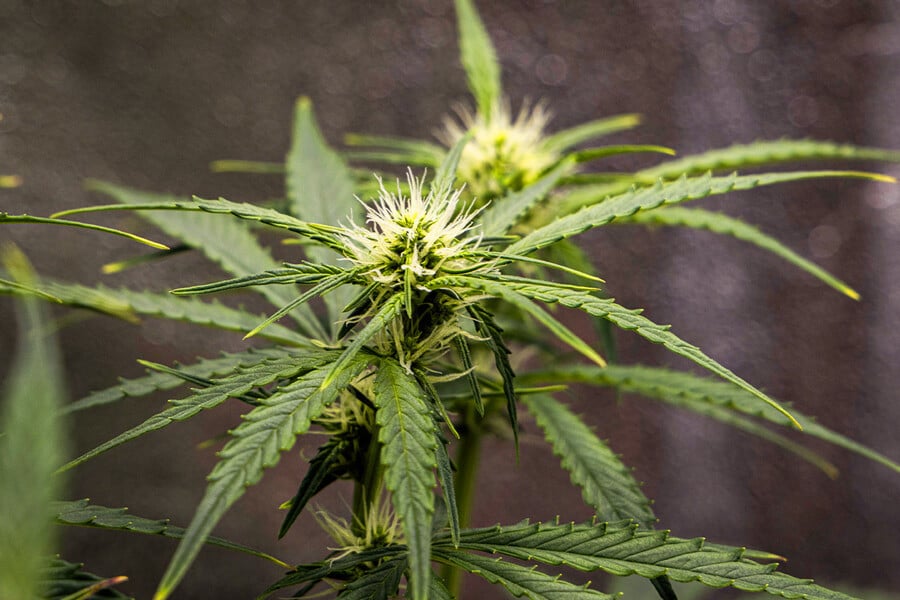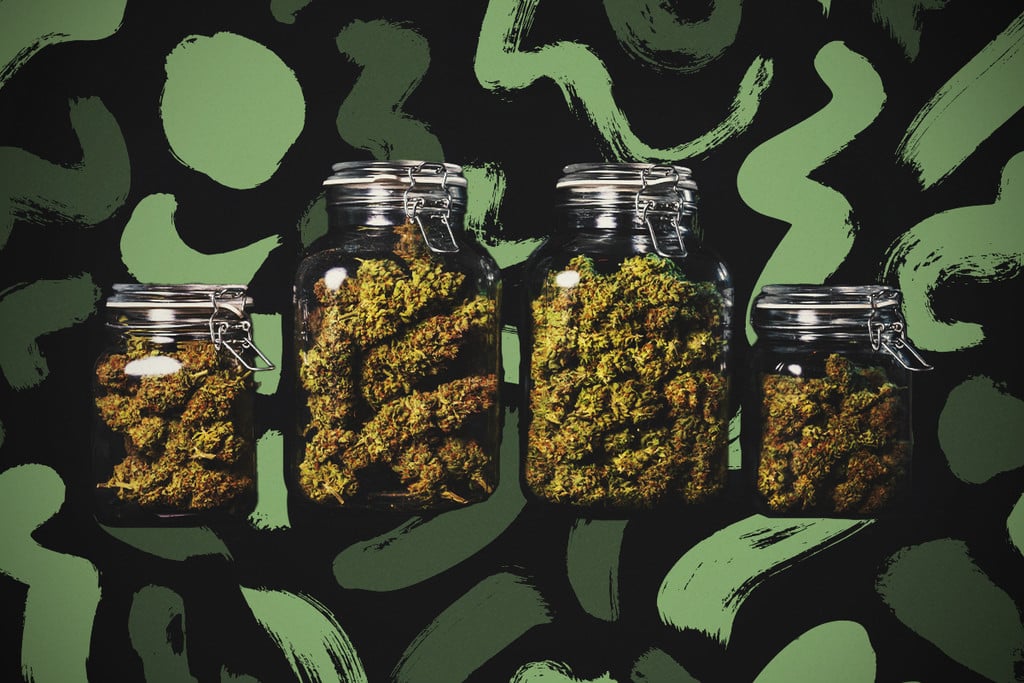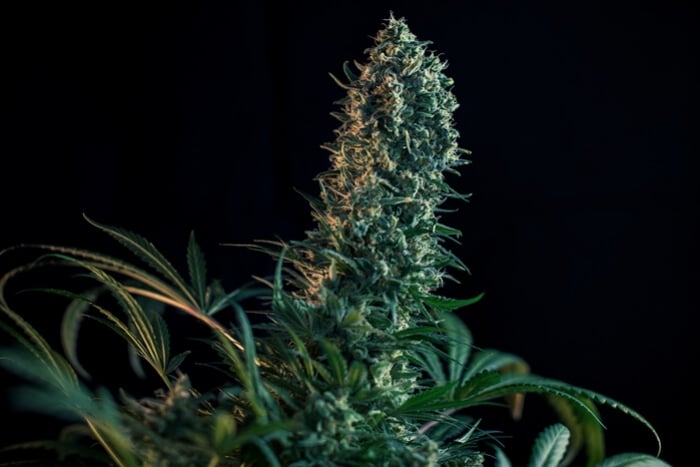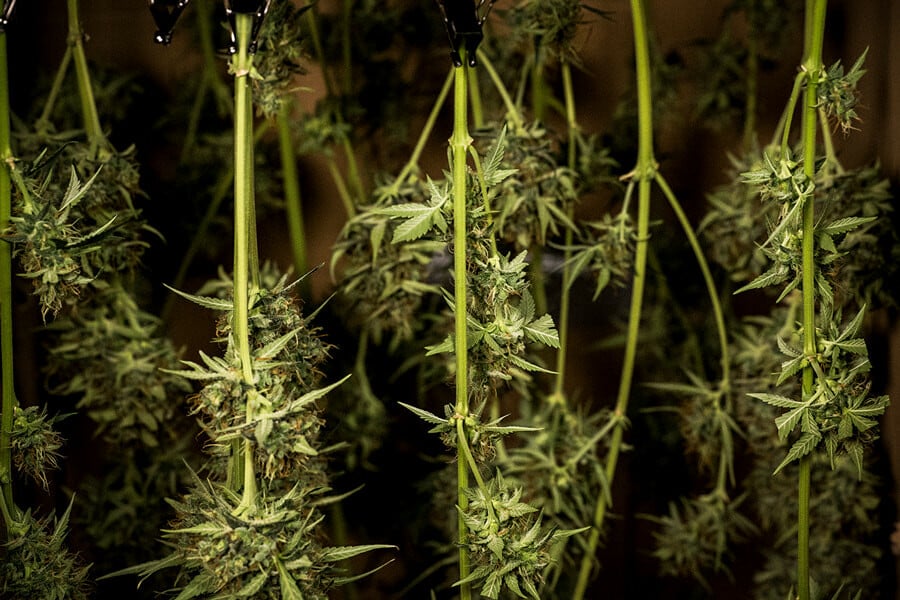.
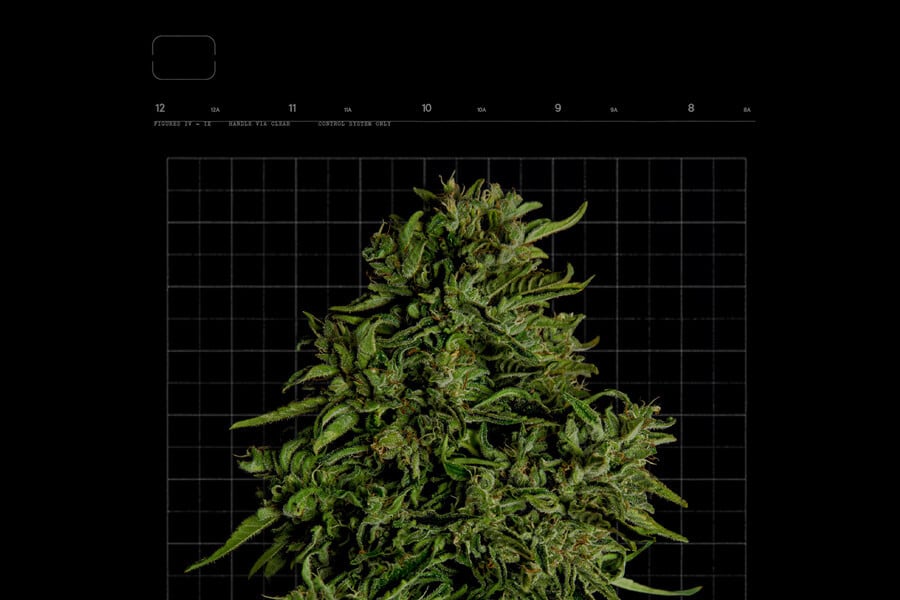
How Long Is the Cannabis Flowering Stage?
Every cannabis grower knows how important the flowering stage is. Over a matter of weeks, plants become covered in dense buds. But how long does weed actually take to flower? And does it vary according to the type of weed you grow? Also, does the flowering stage differ if you grow indoors vs outdoors? We answer all these questions and more here.
Contents:
- Average flowering time for weed
- Photoperiod, feminized, autoflower, hybrid — what does it mean?
- Flowering time for sativa strains
- Flowering time for indica strains
- Hybrid strains vs f1 hybrid varieties
- The impact of genetics on flowering time
- Short summers vs long summers
- When does flowering start outdoors?
- How long is the marijuana flowering stage indoors?
- Master cannabis flowering times with the rqs seedfinder
Ah, the flowering stage. This is the period during which eager cannabis growers watch their plants become laden with dense, aromatic buds. But just how long does weed take to flower? Does it differ from strain to strain? If so, by how much? Never fear, dear reader, as we are here to inform you of just how long it takes different types of marijuana to flower indoors and outdoors. Whether your goal is to get your hands on the fastest variety, or you simply want to make sure you harvest at the right time, we’re here to offer all the information you need.
Average Flowering Time for Weed
Before we get into the nitty-gritty of why different types of cannabis flower for different durations, we’ll provide a quick overview of some average figures. In the RQS seed library, we’ve done the maths and determined the average flowering time for the varieties in our catalogue. The breakdown is as follows:
- Feminized photoperiod: 9 weeks
- Fast-flowering feminized photoperiod: 7.6 weeks
- Feminized autoflowering (including CBD autoflowering seeds): 7.6 weeks
- F1 hybrid autoflowering: 6.4 weeks
- Regular: 9.4 weeks
While there is some notable variation between these categories, we can say that, in general, most modern hybrids take around 9 or so weeks to flower, on average. However, with the advent of fast-growing autoflowering seeds, this average is reduced even more.
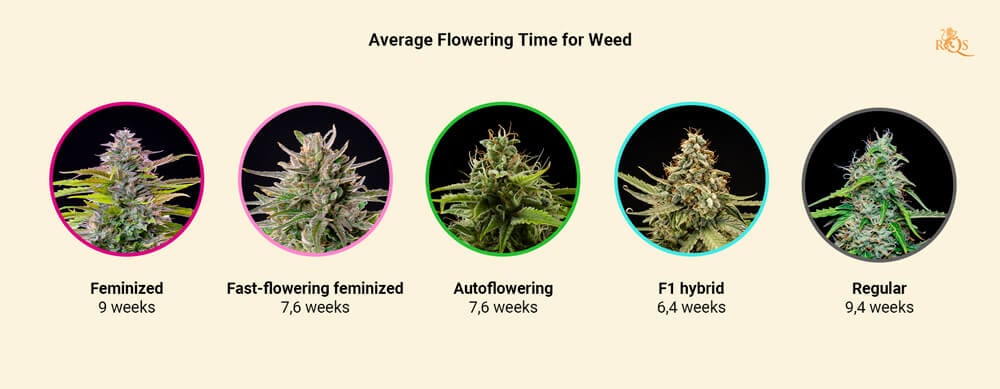
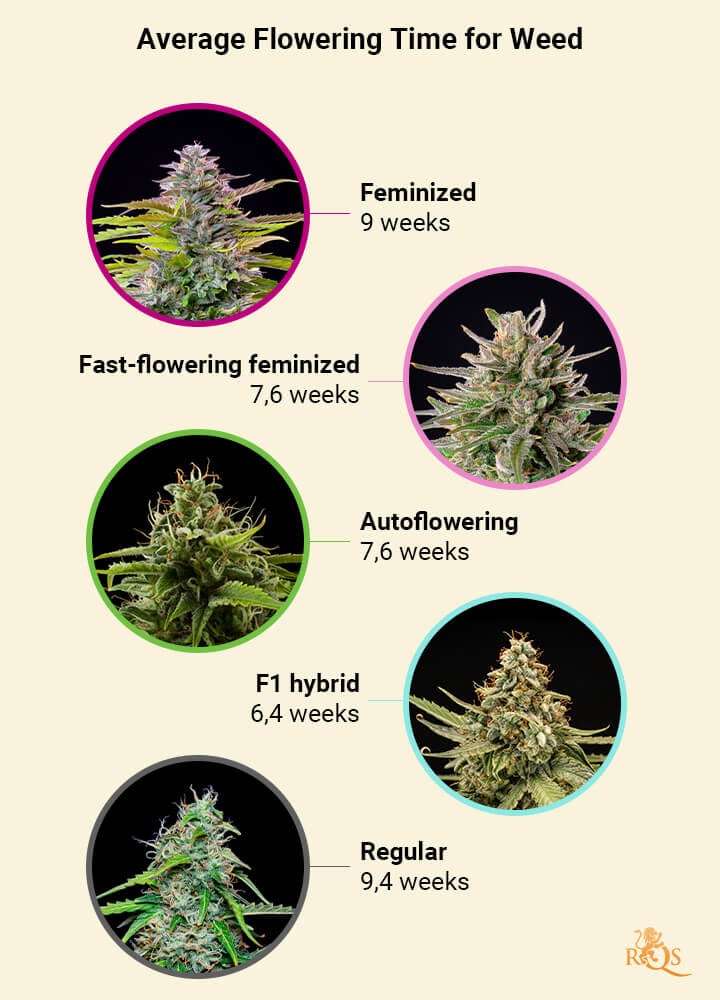
Photoperiod, Feminized, Autoflower, Hybrid — What Does It Mean?
But what do all the above terms mean, and how do they affect the total flowering phase for a crop? Without overcomplicating things, cannabis plants can be placed into the categories of: feminized photoperiod, fast-flowering feminized photoperiod, feminized autoflowering, F1 hybrid autoflowering, and regular.
Below, we’ll detail how each category ultimately affects the duration of the flowering phase.
-
Feminized Photoperiod
Feminized photoperiod cannabis seeds are perhaps the most common on the modern market. The term feminized means that all the seeds sown will turn into female plants, which are the ones that produce the high-quality buds growers love so much.
Photoperiod, on the other hand, refers to the fact that these strains flower according to external light cues. For the majority of photoperiod strains, they must receive 12 hours of light and 12 hours of darkness to enter and sustain flowering indoors. Outdoors, plants will bloom as the light hours naturally dwindle in late summer and fall.
-
Fast-Flowering Photoperiod
Fast-flowering photoperiod strains are those that have been selectively bred to mature their flowers faster, without sacrificing quality. Typically, these strains are achieved by crossing a photoperiod feminized strain with an auto feminized strain, resulting in a fast-flowering photoperiod strain.
-
Feminized Autoflowering
Then we have feminized autoflowering. As the latter term suggests, these strains flower of their own accord and do not follow light cycle changes to progress throughout their life cycle. In addition to flowering automatically, autoflowers feature significantly shorter flowering stages, and overall life cycles, compared to photoperiod strains. Indeed, most autoflowers only spend 3–4 weeks in vegetation before automatically moving into the flowering stage.
-
F1 Hybrids
Next up we have F1 hybrids. These are cutting-edge genetics resulting from crossing two pure, aka highly inbred, parent lines, culminating in plants with exceptional vigour, speed and uniformity. As most F1 hybrids on the market are autoflowers, they also finish their flowering stage quicker.
-
Regular Strains
Finally, we have regular cannabis seeds. These will grow into both male and female plants, allowing cultivators to carry out breeding projects. While regular strains can be photoperiod or autoflowering, they tend to be the former.
Flowering Time for Sativa Strains
But within the above categories, why do some cultivars finish faster than others? This is due to the type of strain, and where the parentage of these strains developed geographically.
Sativa strains are generally known for taking a longer time to finish flowering, compared to indica. This is because sativa landraces adapted to long, warm summers in places such as Thailand. Here, plants knew they had an extended outdoor season to mature their buds. This means home growers should acknowledge that these varieties may take at least 10 weeks to flower indoors, with an outdoor harvest time of late October or early November.
Some examples of feminized photoperiod sativas include AMG, Sour Diesel, Royal Medic, Amnesia Haze, Shining Silver Haze, and Mimosa, all of which have an average flowering time of 10 weeks (late October outdoors). This is actually fairly short compared to some sativas, which can take 11–14 weeks to mature.
Flowering Time for Indica Strains
While sativas adapted to balmy regions of Asia, indicas found their home in mountainous regions with harsh, cold winters, such as the Hindu Kush mountain range. As such, indicas adapted to finish flowering before the onset of the cold weather. For this reason, strains with a high percentage of indica genetics tend to finish flowering quite quickly—in around 8–9 weeks indoors, which equates to early/mid-October outdoors.
Hybrid Strains vs F1 Hybrid Varieties
Now, there’s some confusion over hybrid strains vs F1 hybrid varieties. The former is a time-honoured industry term that refers to a strain containing a mix of indica and sativa parents. With very few exceptions, almost all modern strains are considered hybrids in this sense. These varieties will all exhibit unique flowering times based on their indica/sativa lineage. For example, an 80% indica/20% sativa might take 8 weeks to flower, while a 20% indica/80% sativa might take 10. In general, modern indica/sativa hybrids take around 8–11 weeks to flower.
F1 hybrids are a bit of a different story. These plants are created by crossing two inbred lines (IBLs), resulting in plants with exceptional vigour, uniformity, and stability. These seeds take quite a lot of time and energy to produce, but feature many rewarding traits, including faster flowering times. And given that the majority of F1 hybrids on the market are autoflowering, the total seed to harvest time for these varieties is very short.
F1 hybrid examples: Orion F1 (6–7 weeks of flowering), Apollo F1 (6–7 weeks), Hyperion F1 (6–8 weeks).
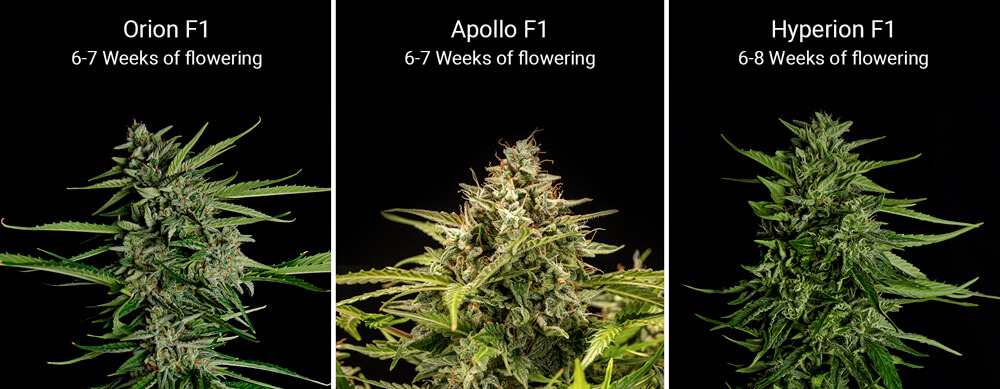
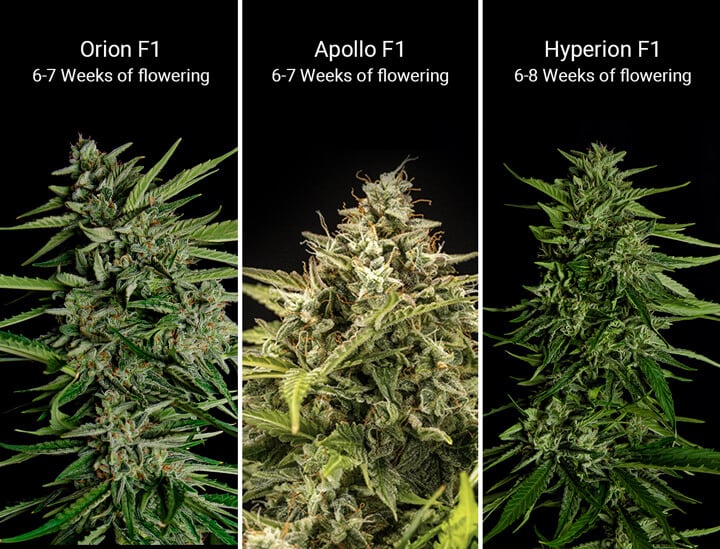
The Impact of Genetics on Flowering Time
With all the above in mind, it’s clear that there’s some variation even among plants in the same general strain category. This is likely due to the strain’s genetic history. Again, where a plant developed, be it Thailand, Afghanistan, etc., has an effect on the duration of its flowering stage.
Sativa strain families like Haze and Thai, for example, tend to take the longest to flower. At RQS, our varieties like Chocolate Haze and Haze Berry have been bred to cut down the wait significantly, but still take 9–11 weeks to finish indoors (which equates to a late October or early November harvest outdoors).
On the other hand, our Kush and Afghan indica strains that developed along the Hindu Kush mountain range exhibit shorter flowering periods. For example, our Special Kush 1 takes just 7–8 weeks to bloom, and Critical takes 8–9 weeks.
Short Summers vs Long Summers
Cannabis strains endure a diverse range of temperatures and humidity. Some thrive in slightly drier regions, while others prefer humid and even colder climates. However, the overall range isn't drastically different.
Now, you may see cannabis varieties, including ours at RQS, categorized as short summer or long summer varieties. This classification refers to whether their maturation speed makes them suitable for temperate regions with shorter summers or Mediterranean areas with long, hot summers.
Quicker-flowering strains, reaching harvest before inclement weather hits regions like northern Europe, fall into the short summer variety.
In contrast, plants with a prolonged, extended flowering phase are considered long summer varieties, more fitting for warmer regions with mild autumn weather.
It’s worth noting that this classification mostly applies to photoperiod strains. Autoflowering varieties grow of their own accord, and therefore will flower regardless of how much light they receive outdoors.
When Does Flowering Start Outdoors?
Outdoors, cannabis naturally starts flowering after the summer solstice, when light hours dwindle sufficiently. In the Northern Hemisphere, plants will start to transition in July, flowering earnestly throughout August and September and wrapping up around early October.
If you live in a region with cold and rainy autumns (such as the Netherlands or the UK), you can play it safe by growing indica-dominant varieties, or strains with short flowering times. If you want to grow a sativa, you may need a greenhouse with supplemental lighting in order to extend the flowering phase enough to get the most out of your plants. If you live somewhere with a long summer, on the other hand, you can grow practically any variety, indica or sativa, and achieve success.
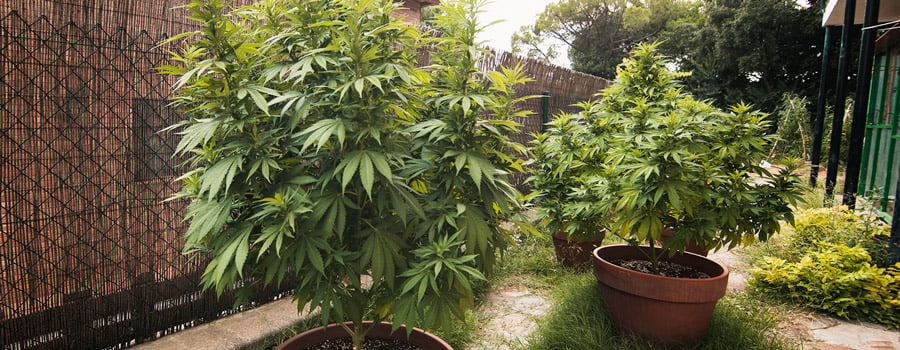
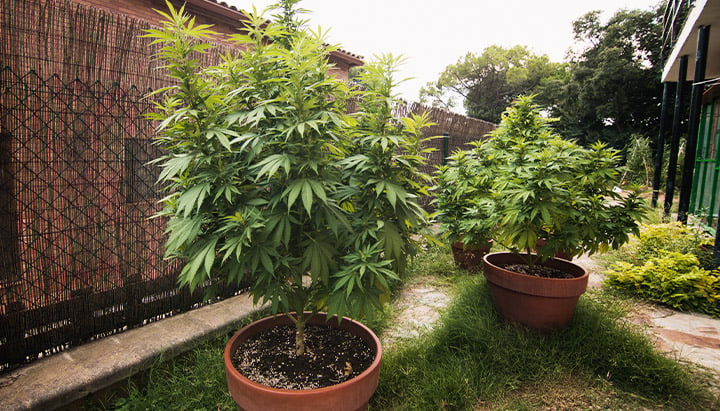
How Long Is the Marijuana Flowering Stage Indoors?
Indoors, things are a little more straightforward. If you’re growing photoperiod strains, you choose when to induce flowering by reducing the light cycle to 12 hours of light and 12 hours of darkness. From here, your plants will start to flower, and will be ready to harvest in the time mentioned on the strain’s data sheet (give or take). But rather than relying on these average figures, it’s better to inspect the trichomes with a jeweller's loupe to really determine the best time to harvest.
Master Cannabis Flowering Times With the RQS Seedfinder
What do you do if you’re looking for the ideal strain partner for your setup? Use the RQS Seedfinder tool, of course. This handy resource allows you to input details related to your environment, as well as plant characteristics you're looking for, and will give you some great recommendations for the ideal strain to grow. Whether you live somewhere hot with plenty of sun or mild with lots of autumn rain, you can find the perfect variety!


























